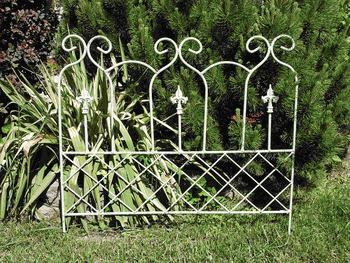Decorating Tips for Wrought Iron Plant Stands
Plant stands made from wrought iron can add elegance and interest to any outdoor area. It is important to use the stand correctly so that the decorative elements of the metalwork enhance everything in the area. A few decorating tips will help anyone to use wrought iron plant stands better.
Choose a Liner Carefully
The first tip is to choose the liner for the plant stands carefully. Liners come in a variety of materials and colors. The finish and color of the wrought iron should be considered when picking a liner. A typical coir liner is a safe choice. There are liners available in dark green and black that might provide a better overall appearance. Take the time to choose an appropriate liner since it will have a large impact on the appearance of the plant stand.
Put the Stand near Contrasting Colors
Look at the colors in the areas where the plant stand might be placed. Something to avoid is putting the plant stand in an area where it is going to be practically invisible. The best option is to put the plant stand in an area that contains some bright or contrasting colors. Those contrasting colors will highlight the metalwork and design of quality wrought iron plant stands.
Consider Hanging Plants and Vines
Another tip is to consider placing hanging plants or vines on the stand in order to create a more interesting and natural appearance. Filling the stand with neatly cropped plants that do not extend beyond the edge of the liner creates a very boring and sterile appearance. It is far better to have plants with foliage that will grow out and lean over the liner. Plants like vinca vines can be trained to wrap around the metalwork of the stand to make an impressive display.
Ensure There Is Good Drainage Underneath
A final tip is to make certain there is good drainage underneath the plant stand. Putting the stand in an area without good drainage can eventually cause soil erosion, damage to concrete or other problems. This can make the area very unattractive. Place the stand in a location where water can drain away safely.














